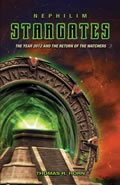PART 11
By Thomas R. Horn
January 4, 2014
NewsWithViews.com
EDITOR'S NOTE: The next three entries will cover Barcodes, GPS, RFID and finally the more concerning recent developments in "living" tattoos and biochips.
In
and of itself, there is nothing inherently evil about a barcode—it
is just  another,
more efficient way of keeping track of your inventory and movement
of freight, laundry, etc.—chores formerly accomplished with
painstaking manual labor. The problem lies in placing this technology
at the disposal of a New World Order-minded government that not only
wants to meddle in our affairs, but wants to control them (and us).
another,
more efficient way of keeping track of your inventory and movement
of freight, laundry, etc.—chores formerly accomplished with
painstaking manual labor. The problem lies in placing this technology
at the disposal of a New World Order-minded government that not only
wants to meddle in our affairs, but wants to control them (and us).
A barcode is simply a mathematically arranged symbol of vertical lines. It is a parallel arrangement of bars and spaces of varying width. The structural arrangement or spacing of these lines, relative to a given set of parameters, can be made to represent a product’s identification number. The UPC, better known simply as a “barcode,” has been put to this use since 1973, having been adopted by the retail industry in 1972. The UPC barcode is considered the “mother” of all microchip transponder technology.
The code is not really as complicated as it may first seem. A typical UPC Version A barcode symbol contains thirty black vertical lines (called “bars”). A pair of these lines equals only one digit or number. In other words, this coding system requires two lines to equal one number.
As
shown below, the UPC code is mainly comprised of digits, the first
set of digits linking to the manufacturer of the product, and the
second set of digits linking to distinctive information about the
product (or a unique product identifier code). The number to the left
preceding the central digits is a 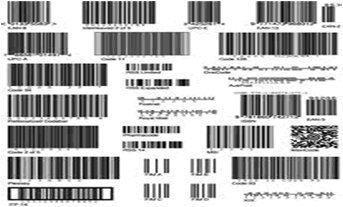 “number
system digit,” and the number to the right of the central digits
is a “transpositional check digit” (or TCD) to flag any
transposition errors.
“number
system digit,” and the number to the right of the central digits
is a “transpositional check digit” (or TCD) to flag any
transposition errors.
On each side and in the center of this series of carefully spaced lines are three pairs of longer lines that extend slightly below the others. These longer pairs of lines are special—they are called “guard bars.”
Guard bars provide reference points for store computer scanners (barcode reading machines) by segregating the left half of the code lines from the right half. This is needed because the left lines have a different message on them than the right lines and must, therefore, be read by the scanner differently. The center pair of guard bars in the UPC barcode is used both to divide the code in half and to tell the scanner/computer what it needs to know in order to readjust its program to interpret the remaining half of the code. Note again the diagram—the left half represents the manufacturer’s code and the right half represents the product code.
Simply stated, a typical UPC Version A barcode symbol consists of two halves, representing a total of twelve numeric digits. These six-digit halves are surrounded by left, center, and right guard bar patterns. Together, the black and white lines produce a series of electronic “dits” and “dahs,” similar to the old Morse code telegraph key “dots and dashes.” The scanner reads these electronic messages as a series of “zeroes” and “ones.” These zeroes and ones represent what are called binary numbers, in computer language.
Binary numbers are a “machine language” that is the basic internal language of computers. This is how the computer “thinks” and gives itself orders. All computers operate on the basis of this two-digit mathematical binary system.
While such barcodes alone are unlikely to be the Mark, they have served to condition mankind for nearly everything in the world—both animate and inanimate—being marked, tagged, coded, numbered, implanted, and identified with some type of ID system that will allow the dictatorial New World Order global government to label, trace, track, monitor, and control everything and everybody on Earth.
Global Positioning Systems (GPS)
This subsection just as well could be called “The Crowded Skies.” That’s because without all those satellites up there, a Global Positioning System (GPS) would not be possible. But they are, indeed, up there—in abundance. In fact, they seem to be proliferating like little rabbits.
A simplified definition of GPS could be: the ability to locate and track people or things on a global scale, to know the exact position of anything, utilizing a battery-powered GPS receiver or other similar telecommunications device (or, as discussed earlier, almost any electronic gadget in any purse or back pocket of the average American).
How does GPS operate, and why is it needed? The answer to the first part of that question is very technical, and the answer to the second part is very obvious. Simply stated, signals are sent from a series of satellites from space to Earth. Receivers on Earth triangulate the signals and calculate latitude/longitude position. The information may then be fed into a computer controlled by the individual (or organization) doing the “locating.”
![]()
The possibilities for commercial use of this technology appear to be, and have already proven to be, limitless…which means the possibilities for abuse of this technology likewise appear to be limited only to the imagination of the powers who control it. With Big Brother gaining more control and power every day, what do you think will be the eventual use of this kind of technology?
Winn Schwartau, in his book, Information Wars, states:
The question “Where are you?” will be answered at the push of a button. Global positioning satellites will know, to within a few feet, your exact location. Lives will be saved as personal digital assistants broadcast the location of lost or injured or kidnapped people. But what about employees? Will their every step be tracked to enhance security or to evaluate their performances for promotions? To the dismay of the unions who say the practice is an invasion of privacy, we already track the routes and times of trucks to increase shipping efficiency. Computers already know almost everything about us; will we also decide to add our every location to this list?
The May 8, 1994, edition of The Bulletin, Bend, Oregon, carried an article by writer Ralph Vartabedian entitled “Defense Satellite Technology Ready for Commercial Boom.” According to Vartabedian, “The Pentagon is awash in obsolete nuclear bombs, mothballed battleships, and surplus military bases [although FEMA apparently has plans to make use of these deserted bases], but out of the scrap heaps left by the Cold War has come a technology with a promising payoff.” Below are some excerpts.
When the Defense Department laid plans in the 1970s for its Global Position System, a network of 24 satellites that broadcasts navigation signals to users on Earth, it was intended to help soldiers fight anywhere, from jungles to deserts.
Along the way, though, commercial interests saw a potentially lucrative concept that could revolutionize industries such as land surveying, trucking, environmental protection, and farming.
The technology [is] now poised to leap into virtually every facet of the American economy.…
With a special receiver that taps the satellite signals, civilian users can determine their position by latitude and longitude within 100 meters (328 feet) anywhere in the world. Once as big as a file cabinet, the receivers are now the size of a paperback book and still shrinking.…

Hot off the
press. Available now. Order your copy today.
Some visionaries anticipate the day when virtually everything that moves in U.S. society—every shipping container, aircraft, car, truck, train, bus, farm tractor, and bulldozer—will contain a microchip that will track and, in many cases report its location. [Note: This is no longer just the dream of some visionaries—it’s actually occurring now, and Vartabedian forgot to mention they’ll be tracking your garbage, as well.] Massive computer systems, they say, will tie together the movement of assets in the economy, providing a sophisticated information system for the status and location of goods.
“Communications satellites were the first great success in space, but GPS is going to dwarf that,” said…a former Hughes Aircraft chairman.… “GPS is going to pervade everything we do.”
…Eventually the price will drop below $50.… At that point, GPS would be inserted into a lot of other electronic gear [sound familiar?]…that could instantly alert police [or others] to an individual’s location.…
Computerized maps are being used to track the spread of disease, pollution, and crime, based on data collected from GPS systems. Hamburger chains pour over these kinds of computer-generated maps to determine the best sites for new franchises.
Interstate truckers use the system to keep tabs of their road taxes.… Cities use the satellite system to dispatch emergency vehicles and track the location of passenger buses. Railroads are finally able to figure out where their trains are.
Orbiting 11,000 miles above Earth, the 24 satellites are the heart of the system.…
An article appearing in ENR entitled “Surveying’s Brave New Digital World” included the following preface:
Surveying and mapping tools have progressed significantly from the days of meticulously entering transit readings in survey notebooks. From the latest in survey marker technology to the latest in computer-enhanced technologies, surveyors and engineers can do their jobs faster, better, and with more precision than ever before.
Recent hardware advances, declining prices of hardware and software, and the greater availability of pre-packaged data are making geographic information system (GIS) technology an affordable and appealing technology for even the smallest firms. In some instances, state legislatures are funding new initiatives or enacting legislation requiring GIS use throughout the state, and Public Utility Commissions are mandating that utilities use GIS to ensure efficient and low-cost public services. Consultants hoping to contract services to these organizations will have to move into the “all digital” world or risk obsolescence. Many private sector clients—such as large engineering firms or developers—are also requesting surveying firms use computer-aided design (CAD) or GIS on projects and deliver digital products.
In this year’s special section on surveying and mapping, we’ll look at what’s new today and what lies just ahead in products and services—including some exciting trends for users of GIS technology, global positioning systems (GPS), and satellite imagery/aerial photography. (emphasis added)
The
application of GPS technology can run from the mundane to the “Indiana
Jones” adventure project. For example, one company was contracted
to map a Caribbean island about ten thousand feet off the coast of
St. Thomas. Since it was used for jungle warfare training during and
following World War II, there was a real possibility of unexploded
ordnance remaining behind. “Lowe [the engineering firm] used
the latest in both hazardous materials handling 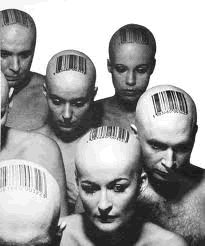 methods
and surveying—including GPS, aerial photography, and GIS technology—to
produce preliminary digital (CAD) maps in just 30 days.” Gone
are the “good old days” when two guys stood behind tripods
and waved at each other…for the most part.
methods
and surveying—including GPS, aerial photography, and GIS technology—to
produce preliminary digital (CAD) maps in just 30 days.” Gone
are the “good old days” when two guys stood behind tripods
and waved at each other…for the most part.
One of the major uses of all those satellites is telecommunications, in a myriad of forms. In Infomart magazine, AT&T’s Roy Weber, director of new business concepts, asks the question, “What’s This World Coming To?” I’d be happy to tell him, but since he’s the director for new business concepts, I’m sure he’s one of those visionaries who is limited only by his imagination when it comes to what we can do with our technology in the future.
Weber has promoted a six-theme program running the gamut from visual communications and telephone automated voice recognition to “connecting the world” with a multimedia broadband network and numbering you. Of course, that’s my favorite. It is Weber’s Theme Five: “We do everything wrong. We number telephones. You don’t want to speak to the telephone. You want to speak to a person…we’re developing Global Personal Calling Services that will find you [anywhere].”
The editor actually felt obliged—I’m sure because of the content of the article—to insert a somewhat tongue-in-cheek preface between the title and the start of the article. It begins:
Editor’s note: In the harsh light of the hospital nursery, the nurses are filling in the blanks on a birth certificate: name, weight, phone number. Phone number? The mere thought of assigning a number to a human being calls forth torrents of ethical and philosophical questions—questions about the relationship between man and machine, about individuality, about privacy.
For Weber, these questions are not simply a matter of intellectual curiosity, they are part of the exercise of inventing the future at AT&T.…
And may we remind you that AT&T has always been right up there with the big banks, MasterCard, and Visa when it comes to development and promotion of smart cards.
Let’s see what Schwartau had to say on the subject of satellite telecommunications:
In under thirty years, satellite communications became an absolute necessity for international transactions. Today, the demand is such that hundreds of new satellite launches are being planned. Motorola’s Iridium Project, for example, will ring the planet with sixty-six satellites, permitting portable phone users to talk to anyone, anywhere, at any time. [Can you imagine how amazing and sensational this announcement was at the time? How desensitized technology has made us all?] A true multinational effort is under way, including Japanese money and manufacturing and Russian orbital launch capabilities. Two competing consortiums have also begun staging their own satellite-based competitive global communications efforts.
…Charles Reich also noticed that technology and society were at odds. “What we have is technology, organization, and administration out of control, running for their own sake.… And we have turned over to this system the control and direction of everything—the natural environment, our minds, our lives.” (emphasis added)
It’s hard to say it much better than that. But as the title of Schwartau’s book, Information Warfare, implies, he continues to issue warnings about the pitfalls involved:
Not all of the switch connections are made through and across wires of copper and fiber optics. Communications increasingly uses the airwaves, as we can see in the proliferation of cellular phones, Motorola’s multibillion dollar Iridium Project, and microwave and satellite transmissions. The electromagnetic ether represents a new battlefield for the Information Warrior.
| Subscribe to the NewsWithViews Daily News Alerts! |
Cellular phone conversations, for example, are wide open to interception by $179 scanner devices that can be bought from Radio Shack, Monitoring Times magazine, or dozens of other sources. Courts have upheld that there is no reasonable expectation of privacy when one is talking on a cellular phone.
Then Schwartau proceeds to describe a number of different methods used in telefraud, and to tell how much it costs the public. If you are convinced that your secrets (or any other information) are safe—even with encryption devices, because the government has the “back-door key”—on the Internet, the information superhighway, satellite telecommunications, your smart card, the Social Security computers…you’re really just kidding yourself—probably because it’s too scary to consider the alternative.
We continue in the next entry with Radio-Frequency Identification (RFID)
WATCH THE BEAST TECH TRAILER
Click here for part -----> 1, 2, 3, 4, 5, 6, 7, 8, 9, 10, 11, 12,
© 2014 Thomas Horn - All Rights Reserved
Thomas Horn is the CEO of RaidersNewsUpdate.com and SurvivorMall.com.
Over the last decade, he has authored three books, wrote dozens of published editorials, and had several feature magazine articles. In addition to past articles at NewsWithViews.com , his works have been referred to by writers of the LA Times Syndicate, MSNBC, Christianity Today, Coast to Coast, World Net Daily, White House Correspondents and dozens of newsmagazines and press agencies around the globe. Tom's latest book is "The Ahriman Gate," which fictionalizes the use of biotechnology to resurrect Biblical Nephilim.
Thomas is also a well known radio personality who has guest-hosted and appeared on dozens of radio and television shows over the last 30 years, including "The 700 Club" and "Coast to Coast AM." When looking for a spokesperson to promote their film "Deceived" staring Louis Gossett Jr. and Judd Nelson, "Cloud 10 Pictures" selected Thomas as their spokesperson to explain the Christian viewpoint on UFO-related demonology.
Web Site: RaidersNewsUpdate.com
E-Mail: RaidersNewsUpdate@gmail.com





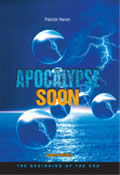
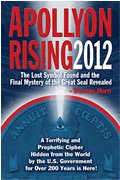







 Share
This Article
Share
This Article